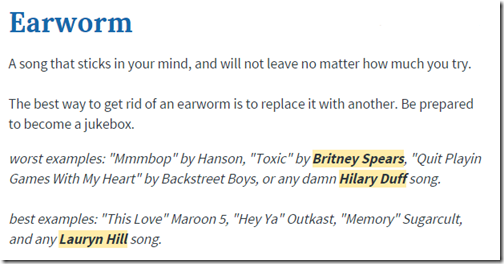For the past two Noels, I published “The 12 Days of Employment Law Christmas.” As this has become a year-end tradition at the blog, I’m sharing it again (with updated links). If you’re feeling brave, post a video of yourself singing along.
Have a great end to your 2014, and happy holidays, regardless of your holiday of choice.
(Some musical accompaniment)
On the first day of Christmas,
my employment lawyer gave to me
a lawsuit for my company.
On the second day of Christmas,
my employment lawyer gave to me
2 trade secrets,
and a lawsuit for my company.
On the third day of Christmas,
my employment lawyer gave to me
3 FMLA notices,
2 trade secrets,
and a lawsuit for my company.
On the fourth day of Christmas,
my employment lawyer gave to me
4 collective actions,
3 FMLA notices,
2 trade secrets,
and a lawsuit for my company.
On the fifth day of Christmas,
my employment lawyer gave to me
5 Facebook firings,
4 collective actions,
3 FMLA notices,
2 trade secrets,
and a lawsuit for my company.
On the sixth day of Christmas,
my employment lawyer gave to me
6 guys-a-lying,
5 Facebook firings,
4 collective actions,
3 FMLA notices,
2 trade secrets,
and a lawsuit for my company.
On the seventh day of Christmas,
my employment lawyer gave to me
7 sex harassers,
6 guys-a-lying,
5 Facebook firings,
4 collective actions,
3 FMLA notices,
2 trade secrets,
and a lawsuit for my company.
On the eighth day of Christmas,
my employment lawyer gave to me
8 discriminating managers,
7 sex harassers,
6 guys-a-lying,
5 Facebook firings,
4 collective actions,
3 FMLA notices,
2 trade secrets,
and a lawsuit for my company.
On the ninth day of Christmas,
my employment lawyer gave to me
9 ladies lactating,
8 discriminating managers,
7 sex harassers,
6 guys-a-lying,
5 Facebook firings,
4 collective actions,
3 FMLA notices,
2 trade secrets,
and a lawsuit for my company.
On the tenth day of Christmas,
my employment lawyer gave to me
10 labor campaigns,
9 ladies lactating,
8 discriminating managers,
7 sex harassers,
6 guys-a-lying,
5 Facebook firings,
4 collective actions,
3 FMLA notices,
2 trade secrets,
and a lawsuit for my company.
On the eleventh day of Christmas,
my employment lawyer gave to me
11 personnel manuals,
10 labor campaigns,
9 ladies lactating,
8 discriminating managers,
7 sex harassers,
6 guys-a-lying,
5 Facebook firings,
4 collective actions,
3 FMLA notices,
2 trade secrets,
and a lawsuit for my company.
On the twelfth day of Christmas,
my employment lawyer gave to me
12 disabled workers,
11 personnel manuals,
10 labor campaigns,
9 ladies lactating,
8 discriminating managers,
7 sex harassers,
6 guys-a-lying,
5 Facebook firings,
4 collective actions,
3 FMLA notices,
2 trade secrets,
and a lawsuit for my company.
Merry Christmas!



 The Christmas season is upon us, which means that the elves are hard at work deep inside the confines of the North Pole’s buildings preparing gifts to load onto Santa’s sleight for his Yuletide trip around the globe. Pop culture, such as Rudolph the Red-Nosed Reindeer and Elf, portrays Santa’s workshop as a happy, jolly place, where the elves gleefully craft toys all hours of the day and night, with not even a whisper of discontent.
The Christmas season is upon us, which means that the elves are hard at work deep inside the confines of the North Pole’s buildings preparing gifts to load onto Santa’s sleight for his Yuletide trip around the globe. Pop culture, such as Rudolph the Red-Nosed Reindeer and Elf, portrays Santa’s workshop as a happy, jolly place, where the elves gleefully craft toys all hours of the day and night, with not even a whisper of discontent. 
